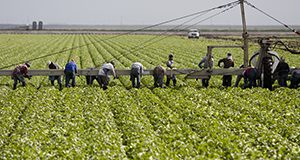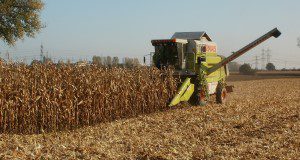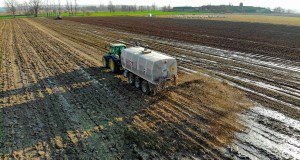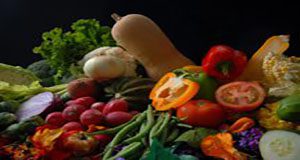Las bebidas nutricionales suplementarias a menudo se usan en hospitales y hogares de adultos para ayudar a nutrir a quienes pueden comer mal y han perdido peso debido a una enfermedad o falta de apetito. Más recientemente, las bebidas nutricionales están disponibles para la compra de los consumidores. Ejemplos de bebidas o batidos nutricionales suplementarios comunes son Ensure® y Boost®. Esta publicación explora la pregunta que muchos adultos mayores se hacen: “¿Necesito bebidas nutricionales suplementarias?”
This new 3-page publication of the UF/IFAS Food Science and Human Nutrition Department is a Spanish translation of FSHN18-12/FS315, Supplemental Nutrition Drinks: Do I Need Them? Written by Claire Marie Fassett, Nancy J. Gal, and Wendy J. Dahl, and translated by Daniela Rivero Mendoza.
https://edis.ifas.ufl.edu/fs321
Tag: Food Science and Human Nutrition Department
¿Cuantas comidas debo comer cada dia?
Comer de manera saludable no se trata tanto de la cantidad de comidas y meriendas consumidas, sino de los tipos y las cantidades de alimentos totales consumidos en un día. Tratar de cumplir con las porciones recomendadas de los cinco grupos de alimentos, es decir, frutas, verduras, granos, proteínas y productos lácteos ayudará a promover la buena salud y prevenir enfermedades.
This new 2-page publication of the UF/IFAS Food Science and Human Nutrition Department is the Spanish translation of FSHN18-10/FS313, How many meals should I eat each day? Written by Zainab Alyousif and Wendy Dahl, and translated by Daniela Rivero Mendoza.
https://edis.ifas.ufl.edu/fs319
Food Safety on the Farm: Good Agricultural Practices and Good Handling Practices: an Overview
Good Agricultural Practices (GAPs) and Good Handling Practices (GHPs) encompass the general procedures that growers, packers and processors of fresh fruits and vegetables should follow to ensure the food safety of their product. GAPs usually deal with preharvest practices (i.e., in the field), while GHPs cover postharvest practices, including packing and shipping. We will use the term GAPs in this fact sheet to generally cover pre- and postharvest practices associated with the safe handling of produce, both fresh and minimally processed. This five-page introduction to the Food Safety on the Farm series provides an overview of GAPs and GHPs, summarizing major principles and recommendations of later documents in the series. Written by Jaysankar De, Christopher R. Pabst, Jessica Lepper, Renée Goodrich Schneider, and Keith R. Schneider and published by the UF/IFAS Food Science and Human Nutrition Department.
http://edis.ifas.ufl.edu/fs135
Preventing Foodborne Illness: Cyclosporiasis
Cyclosporiasis is an intestinal illness caused by the microscopic parasite Cyclospora cayetanensis. People can become infected with Cyclospora by consuming food or water contaminated with the parasite. People living or traveling in countries where cyclosporiasis is endemic may be at increased risk for infection. This 6-page publication is part of the Preventing Foodborne Illness series and describes symptoms and strategies for cyclosporiasis prevention for farmers, restaurants and retailers, and consumers. This major revision was written by Christopher R. Pabst, Jaysankar De, Renée Goodrich-Schneider, and Keith R. Schneider and published by the UF/IFAS Food Science and Human Nutrition Department.
http://edis.ifas.ufl.edu/fs130
Food Safety on the Farm: Good Agricultural Practices and Good Handling Practices: Transportation

Good agricultural practices (GAPs) and good handling practices (GHPs) encompass the general procedures growers, packers, and processors of fresh fruits and vegetables should follow to ensure the safety of their product. GAPs usually address preharvest practices (i.e., in the field), while GHPs cover postharvest practices, including packing and shipping. This 3-page fact sheet covers the GAPs of transporting crops. This major revision is a part of the Food Safety on the Farm series and was written by Christopher R. Pabst, Jaysankar De, Alina Balaguero, Jessica Lepper, Renée Goodrich-Schneider, and Keith R. Schneider and published by the UF/IFAS Food Science and Human Nutrition Department.
http://edis.ifas.ufl.edu/fs151
Food Safety on the Farm: Good Agricultural Practices and Good Handling Practices: Field Sanitation
Good Agricultural Practices (GAPs) and Good Handling Practices (GHPs) encompass the general procedures that growers, packers, and processors of fresh fruits and vegetables should follow to ensure the safety of their product. GAPs usually deal with preharvest practices (i.e., in the field), while GHPs cover postharvest practices, including packing and shipping. This 5-page fact sheet covers harvest practices associated with sanitation in the field, including basic principles for microbial food safety and control of potential hazards. This major revision is a part of the Food Safety on the Farm series and was written by Jessica Lepper, Jaysankar De, Christopher Pabst, Renée Goodrich-Schneider, and Keith Schneider and published by the UF/IFAS Food Science and Human Nutrition Department.
http://edis.ifas.ufl.edu/fs160
Food Safety on the Farm: Good Agricultural Practices and Good Handling Practices: Traceback
Good Agricultural Practices (GAP) and Good Handling Practices (GHP) are voluntary audits that verify fruits and vegetables are produced, packed, handled, and stored as safely as possible to keep the risks of microbial food safety hazards at the minimal level. Good Agricultural Practices usually deal with preharvest practices (i.e., in the field), while GHPs cover postharvest practices, including packing and shipping. This 3-page fact sheet in the Food Safety on the Farm series covers GAPs and GHPs relating to traceback, or the ability to track food items, such as fresh produce, back to their source. This major revision was written by Jaysankar De, Christopher R. Pabst, Alexandra S. Chang, Renée M. Goodrich-Schneider, and Keith R. Schneider and published by the UF/IFAS Food Science and Human Nutrition Department.
http://edis.ifas.ufl.edu/fs152
Food Safety on the Farm: Good Agricultural Practices and Good Handling Practices: Manure and Municipal Biosolids
Good Agricultural Practices (GAPs) and Good Handling Practices (GHPs) encompass the general procedures growers, packers, and processors of fresh fruits and vegetables should follow to ensure the safety of their product. GAPs usually deal with pre-harvest practices (i.e., in the field), while GHPs tend to cover post-harvest practices, including packing and shipping. This 5-page entry in the Food Safety on the Farm series focuses on Good Agricultural Practices, including pathogen reduction and handling and application, to control potential hazards when working with manure and biosolids. This major revision was written by Jaysankar De, Christopher R. Pabst, Jessica Lepper, Renée M. Goodrich-Schneider, and Keith R. Schneider and published by the UF/IFAS Food Science and Human Nutrition Department.
http://edis.ifas.ufl.edu/fs150
Preventing Foodborne Illness: Yersiniosis
 Yersiniosis is an infectious disease caused by the bacterium Yersinia and is typically associated with the consumption of contaminated food or liquids. Yersiniosis is characterized by common symptoms of gastroenteritis such as abdominal pain and mild fever. The bacterium is prevalent in the environment, enabling it to contaminate water and food systems. Outbreaks of yersiniosis have been associated with improperly pasteurized milk, ready-to-eat salad mix, oysters, and more commonly with consumption of undercooked meals containing pork. Yersiniosis incidents have been reported frequently in Northern Europe, Scandinavia, and Japan, and rarely in the United States. However, the reported low incidence of Yersinia in the US food supply may be underestimated due to the long incubation time and misdiagnosis of patients with Y. enterocolitica infections, along with the inability to identify the source of infection and the fact that only serious cases are reported. This 4-page major revision, written by Christopher Pabst, Jaysankar De, Aswathy Sreedharan, Correy Jones, and Keith R. Schneider and published by the UF/IFAS Food Science and Human Nutrition Department, also describes long-term effects and complications of yersiniosis, members of the population most at risk, and prevention methods.
Yersiniosis is an infectious disease caused by the bacterium Yersinia and is typically associated with the consumption of contaminated food or liquids. Yersiniosis is characterized by common symptoms of gastroenteritis such as abdominal pain and mild fever. The bacterium is prevalent in the environment, enabling it to contaminate water and food systems. Outbreaks of yersiniosis have been associated with improperly pasteurized milk, ready-to-eat salad mix, oysters, and more commonly with consumption of undercooked meals containing pork. Yersiniosis incidents have been reported frequently in Northern Europe, Scandinavia, and Japan, and rarely in the United States. However, the reported low incidence of Yersinia in the US food supply may be underestimated due to the long incubation time and misdiagnosis of patients with Y. enterocolitica infections, along with the inability to identify the source of infection and the fact that only serious cases are reported. This 4-page major revision, written by Christopher Pabst, Jaysankar De, Aswathy Sreedharan, Correy Jones, and Keith R. Schneider and published by the UF/IFAS Food Science and Human Nutrition Department, also describes long-term effects and complications of yersiniosis, members of the population most at risk, and prevention methods.
http://edis.ifas.ufl.edu/fs193
Facility Registration and Initial Regulatory Compliance Activities for Acidified Food and Low-Acid Canned Food Processors in Florida
Food businesses are subject to a wide range of regulatory requirements. Food entrepreneurs who want to produce and sell acidified foods or low-acid canned foods must abide by specific FDA regulations. This new 3-page document intends to clarify the initial steps food entrepreneurs must implement to comply with these regulations. This factsheet is one in a Food Entrepreneurship in Florida series, which assists beginning and established food entrepreneurs by providing them information on topics highly relevant to starting and running a food business: regulations, safety, labeling, processing, and marketing. Written by Matthew Krug and Soohyoun Ahn, and published by the UF/IFAS Food Science and Human Nutrition Department, February 2019.
http://edis.ifas.ufl.edu/fs318
Diet and Brain Health
Following a healthful diet provides many benefits throughout the life cycle. Maintaining good eating habits as we age can be especially helpful to preserve cognitive health (the ability to remember, learn, and make decisions). This 3-page publication provides tips for healthful eating that may help to maximize brain health in older adults. Written by Pooja Tolani and Wendy J. Dahl and published by the UF/IFAS Department of Food Science and Human Nutrition, January 2018.
http://edis.ifas.ufl.edu/fs304
The New Nutrition Facts Label
The Nutrition Facts label is a great tool for consumers who are trying to make better food choices; it was created in 1993 to help members of the public learn more about the nutritional value of their food. Revisions to the label’s design were released in 2016, marking the first major change to the label in over 20 years. This 3-page document, written by Samantha Buddemeyer and Gail P. A. Kauwell, discusses the new features of the Nutrition Facts label. Published by the UF/IFAS Department of Food Science and Human Nutrition, January 2018.
http://edis.ifas.ufl.edu/fs300
Food Safety on the Farm: Good Agricultural Practices and Good Handling Practices-Field Sanitation
The ‘Food Safety on the Farm’ series is a collection that reviews the generally recognized principles of GAPs (good agricultural practices) as they relate to produce, primarily at the farm level and with particular focus on fresh Florida crops and practices. This 4-page publication focuses on GAPs and GHPs (good handling practices) relating specifically to field sanitation. Written by Jessica A. Lepper, Aswathy Sreedharan, Renee M. Goodrich-Schneider, and Keith R. Schneider and published by the UF/IFAS Department of Food Science and Human Nutrition, December 2017.
http://edis.ifas.ufl.edu/fs160
Cuba and US: Food Customs and Health
Cubans currently make up the third largest Hispanic population in the US, with many living in Florida (mostly in Miami). Therefore, their cultural influence is notable, especially when it comes to cuisine. This 3-page document discusses traditional meals, diet, and health among Cubans. Written by Agata Kowalewska and Edwin Makarevich and published by the UF/IFAS Food Science and Human Nutrition Department, December 2017.
http://edis.ifas.ufl.edu/fs303
Best Practices for Shoppers at the Farmers' Market
Farmers’ markets are popular, diverse places to shop for fresh, local food, nursery stock, handmade crafts, and much more. This 3-page fact sheet is one in a “Florida Farmers’ Markets” series and offers recommendations for shoppers for a successful farmers’ market experience. Written by Maria Rometo, Jamie Sapijaszko, and Soohyoun Ahn and published by the UF/IFAS Department of Food Science and Human Nutrition, November 2017.
http://edis.ifas.ufl.edu/fs302
Food Allergies
A food allergy is a specific immune system reaction that happens after a person consumes what is normally considered a safe food. Reactions can range in severity from minor to fatal. This 4-page document discusses the cause, symptoms, and management of food allergies in children and adults. Written by Keith R. Schneider, Renee Goodrich-Schneider, Soohyoun Ahn, Susie Richardson, Ploy Kurdmongkoltham, and Bruna Bertoldi and published by the UF/IFAS Department of Food Science and Human Nutrition, November 2017.
http://edis.ifas.ufl.edu/fs123
Food Safety Tips for the Holiday Season
Food is always an important part of holiday festivities, but holiday meals can take a turn for the worse if food safety is not properly practiced when preparing and cooking the food. This 7-page factsheet provides information about safe food practices for the holidays. Written by Soohyoun Ahn, Jessica A. Lepper, and Keith R. Schneider and published by the UF/IFAS Department of Food Science and Human Nutrition, November 2017.
http://edis.ifas.ufl.edu/fs260
Preventing Foodborne Illness: Clostridium botulinum
Clostridium botulinum is the bacterium that causes botulism.This seven-page fact sheet describes the different types of botulism, the symptoms of botulism, the foods associated with botulism, and ways to prevent botulism. Written by Keith R. Schneider, Renée M. Goodrich Schneider, Ploy Kurdmongkoltham, and Bruna Bertoldi and published by the Food Science and Human Nutrition Department.
http://edis.ifas.ufl.edu/fs104
Raising Healthy Children: Wheat Allergies
If your child has been diagnosed with a wheat allergy, you may be wondering what you will feed him or her, because wheat is an ingredient in so many foods. Learning about ways to manage and treat your child’s allergy can help make this diagnosis less scary. This six-page publication is designed to provide you with information about wheat allergies and tips to help keep your child safe and reaction-free. Written by Pooja Tolani and Gail P.A. Kauwell and published by the Food Science and Human Nutrition Department.
http://edis.ifas.ufl.edu/fs299
Dietary Guidelines for Americans 2015–2020: A Summary
About half of all adult Americans have at least one chronic disease that could be prevented. Many of these preventable chronic diseases are related to poor eating and physical activity habits. The good news is that the risk of chronic diseases, such as heart disease, high blood pressure, and type 2 diabetes, can be reduced with the help of the 2015 Dietary Guidelines for Americans, which is described in this five-page fact sheet. Written by Kelly Johnston and Karla P. Shelnutt and published by the Food Science and Human Nutrition Department.
http://edis.ifas.ufl.edu/fs298

















